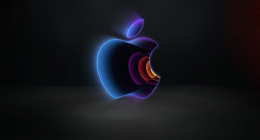Zuckerberg sees connectivity as one of the biggest issues that plague the developing economies at the moment. And while Facebook has tried bringing more people online it hasn’t really taken just the right steps in that direction — Free Basics of course, is an example of those drastic failure experiments.
The company however, is now coming up with something new. Something which Google via Project Loon and Microsoft via its own white band spectrum initiatives have been doing. Facebook has unveiled a new terrestrial antenna project, to provide a consistent, high-bandwidth internet experience in cities and rural areas. The two projects that are part of this system are Terragraph and Project ARIES (Antenna Radio Integration for Efficiency in Spectrum).
Terragraph
Terragraph antennas are wireless systems that will focus on providing high-speed internet services to dense urban areas, leveraging the cloud for intensive data processing to optimize data costs. The Terragraph project will help create nodes/antennas that are inexpensive relative to traditional telecom infrastructure. These antennas are non-line-of-sight antennas, which means there is no interference in signals as it can steer clear of tall building and reach the user, using both Wi-Fi and cellular signals.
Facebook researchers Neeraj Choubey and Ali Y Panah in a blogpost said that
We’re currently testing Terragraph at Facebook headquarters in Menlo Park and preparing a broader trial with the city of San Jose in California. We selected the latter for its mix of building types and neighborhoods, its proximity to Menlo Park, and the city’s commitment to demonstrating new technologies through the mayor’s Smart City Vision.
Project ARIES
Project ARIES is focused on solving a much bigger problem of transmitting bigger chunks of data using the least amount of spectrum bandwidth. Facebook Research Lab has designed an array of radio antennas that will harness this incredible technology in providing communications to rural communities from city centers. Using an array of antennas like these will also help avoid the expense of setting up a rural telecom infrastructure.
Facebook is focused on pushing the Terragraph technology out as soon as possible, with the help of telecom partners and Internet service providers. While, the ARIES project is under development and testing on 4G networks, but can also be used with 5G in the future. Facebook also intends to make this technology open to the wireless communications research and academic community to help build and improve on the already implemented algorithms (or devise new ones) that will help solve broader connectivity challenges of the future.
Facebook is certainly working hard to run the extra mile, and close the connectivity gap between developed, developing and under-developed nations. With the launch of projects like solar-powered drones, powerful radio antennas and a telecom infrastructure project, Facebook is surely to see a urge in user traffic in the coming years, when their user base grows from 1.59 Billion users to a upside of 5 Billion by the year 2030.






